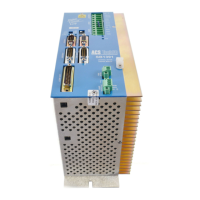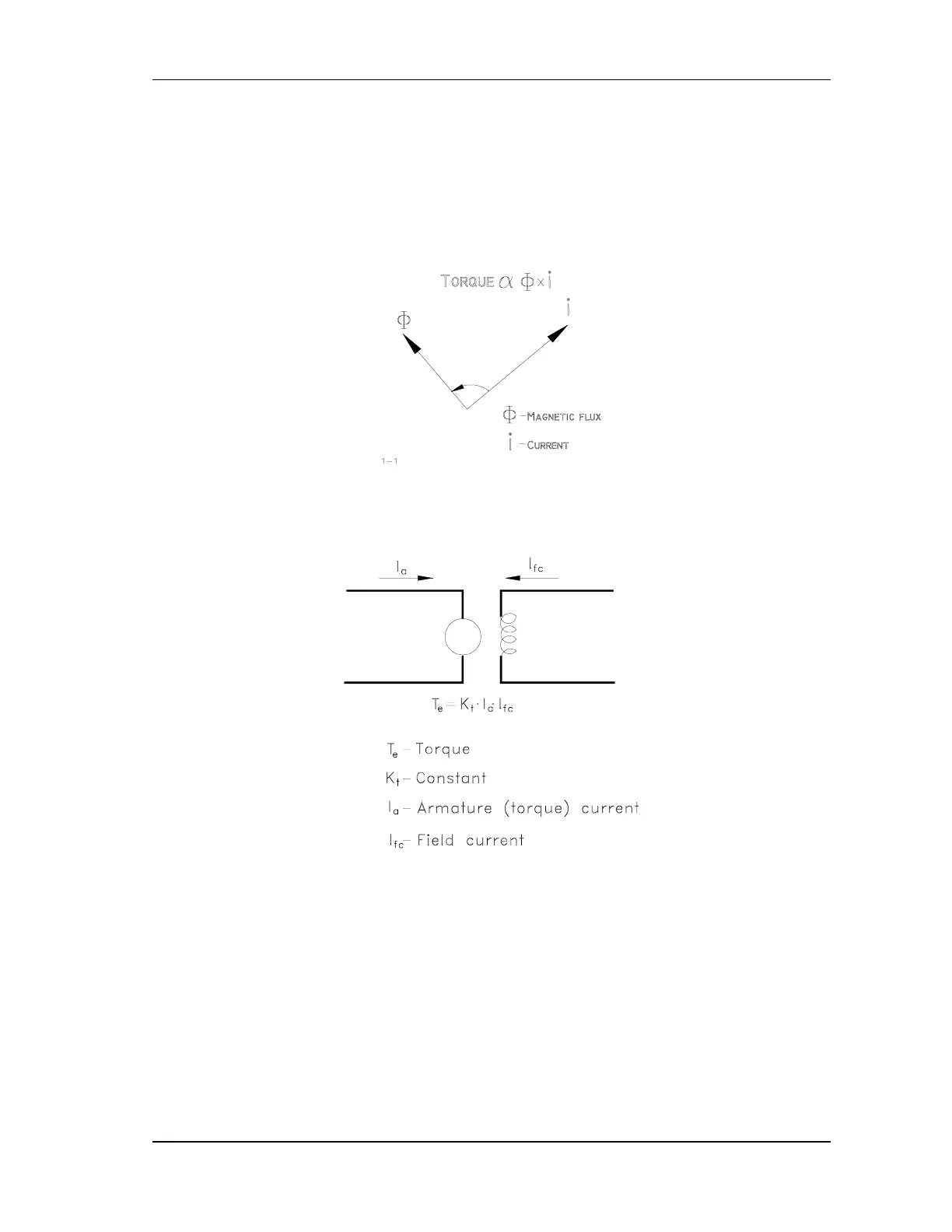VECTOR CONTROL AND MOTORS 8-3
SB1391 Hardware and Setup Guide - Document revision no. 1.14
8.1.1. What is Vector Control?
In any electrical motor, to generate torque requires a magnetic field and a current that is
perpendicular to it (FIGURE 8-2). The generated torque is related to the vector multiplication of
these two vectors.
FIGURE 8-2 Current and magnetic field vectors
In the Vector Control method, the AC induction motor is controlled like a separately excited DC
motor (FIGURE 8-3).
FIGURE 8-3 Model of separately excited DC motor
In a DC motor, the magnetic field is generated by field winding (or by the permanent magnet in a
PM motor).
The rotor's current is "always" perpendicular to the magnetic field. Thus, assuming a fixed
magnetic field, the torque is proportional to the rotor's current, which is the basic and most
important requirement for high performance servo Action.
The DC method of control is extended to an AC induction motor by considering the machine
operation in a synchronously rotating reference frame where the sinusoidal variables appear as
DC quantities (FIGURE 8-4).

